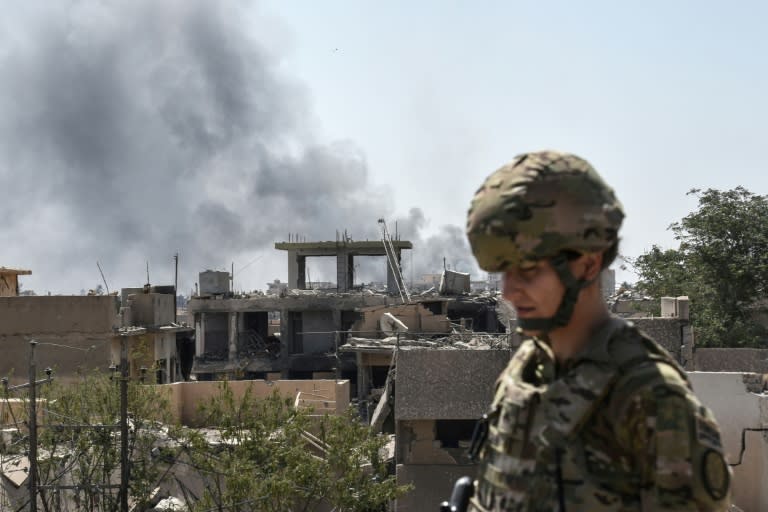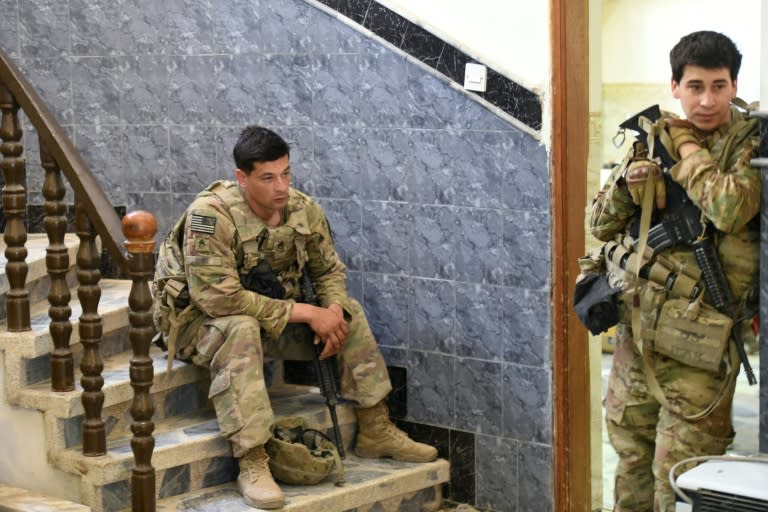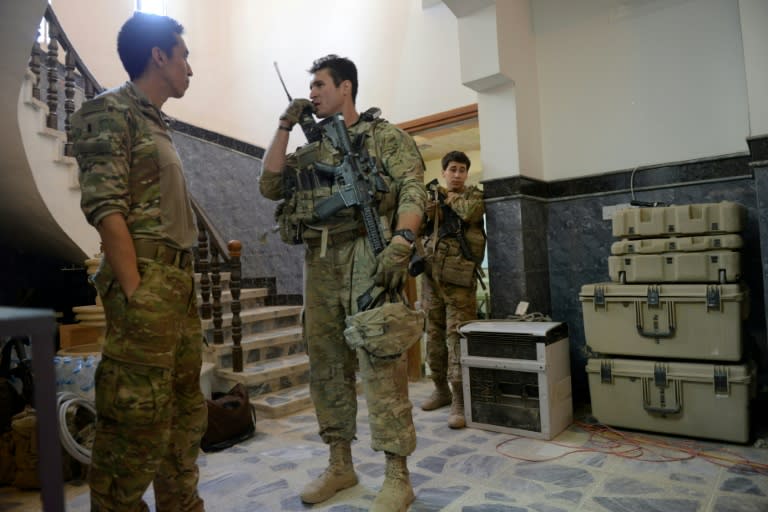Deep in Mosul, US forces support Iraq's fight
In a once-plush house in west Mosul, a handful of US soldiers watch on as an Iraqi commander barks orders over the radio to his troops fighting jihadists little more than a mile away. Senior Iraqi officers huddle around a map showing their forces' advance against the Islamic State group in Mosul's Old City, as walkie-talkies crackle with strained voices giving the latest news from the front. The US officers step in occasionally to comment on the tense back-and-forths. The Americans are part of a dozens-strong advisory team based in the makeshift command post, in a battered neighbourhood pock-marked by shelling less than two kilometres (1.2 miles) from the front line. "We live with them on a daily basis, hand in hand," says Lieutenant Colonel Andrew Kaiser, the youthful-looking officer advising the commander of the Iraqi 16th Division. In the hallway outside the command centre, two US soldiers in body armour sit with rifles at their sides at the foot of a spiral staircase next to a disused water fountain. They are taking a break from guard duty on the sweltering street outside, where their armoured vehicles are parked. Resting in another room in the house, which is plastered with maps of the city, Kaiser says his role has changed drastically since his last visit to the city, when he was part of the US forces based in Mosul more than a decade ago. - Difficult terrain - Using video feeds from surveillance drones, satellite maps and reports from the Iraqi troops on the ground, he now advises the commander of the division on how best to press on in the face of fierce resistance from the jihadists. Some of what made the jihadists a formidable fighting force in the early stages of the battle for Mosul, launched by Iraqi forces with support from the US-led coalition in October, has changed in the latest fighting, Kaiser says. Their weapons and manpower have been ground down in months of fighting. "Because the distances are so close they can't use anti-armour weaponry, they can't use snipers, they don't have a VBIED (vehicle-born improvised explosive device) capacity like they did," he says. But he concedes the Old City is very tough terrain for fighting. On the street outside the command centre, the sound of mortar rounds can be heard in the distance and thick smoke can be seen billowing from sites hit by warplanes and artillery. A major worry for Iraqi forces, and for Kaiser's team, is the large number of civilians trapped in Mosul's Old City, and how to avoid harming them in their operations. "The criminal gangs of Daesh are using civilians as human shields to hinder the movement of our units," says Colonel Issam Ghadban, head of media for the division Kaiser is attached to, using an Arabic acronym for IS. As many as 100,000 civilians could be trapped there, in what the UN refugee agency's Iraq representative Bruno Geddo has called the "largest urban warfare since World War II". - Human shields video - On June 8, the UN's rights office said it had credible reports that 230 civilians have been killed by the IS group trying to flee west Mosul since May 26. The coalition also announced in March that it would investigate reports its strikes had killed a large number of civilians in the area of Mosul al-Jadida. "We want the protection of civilians to be put at the centre of the military operations, we continue to advocate for fighting to respect the principles of precaution, distinction and proportionality," Geddo says. Every day, teams launch small surveillance drones from the house in West Mosul where Kaiser's unit works with the Iraqi division, and it was via the grainy video from one of these that he witnessed the threat to civilians in the Old City. After striking a house from which IS jihadists were trying to detonate explosives, Kaiser and the Iraqi commanders watched the aftermath. "We watched two ISIS members wearing the full military equipment, with rifles, start shuttling women and children into that building," he says, using another acronym for IS. "They're trying to goad you into striking civilians, by moving civilians, women and children, to protect their vital capability sets."




